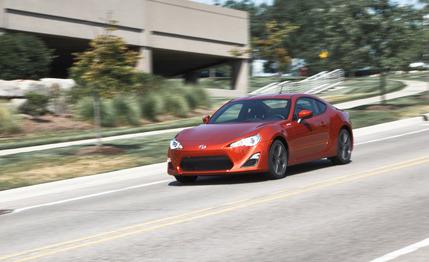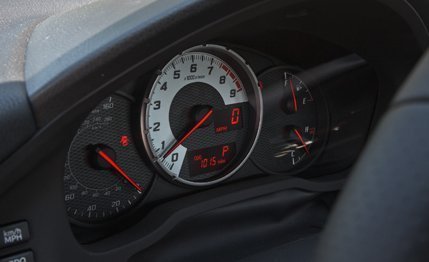
 Instrumented Test
Instrumented Test


We hope you chose to read this review out of some kind of sick curiosity. Why would someone pick the automatic version of what’s supposed to be the Amazing Reborn Rear-Drive Sports Coupe? It’s hard to say, but in the interest of thoroughness we’ve tested one anyway, and here’s the surprise: The FR-S’s is actually a pretty good automatic, one worthy of the rest of the car’s promise.
Low and the Opposite of Fast
Because we suspect anyone interested in this car has already read our previous coverage on it and its Subaru twin (found here, here, and here), we’ll get straight to the transmission. You want to know if it’s quicker than the manual. It is not. In fact, the six-speed slushbox is considerably slower, being geared more for efficiency than all-out acceleration. Fifth and sixth gears are overdrives, and first gear is slightly taller in the automatic. (The final-drive ratio is shared by both transmissions, giving us a fair comparison of fuel-sipping apples to less-slow oranges.)
In the sprint to 60, the manual car is 1.7 seconds more fleet. The gap closes to 1.4 seconds (and a 5-mph differential) at the quarter-mile mark. Grip and braking numbers basically are the same between the models—one manual version we tested posted an additional 0.06 g on the skidpad, but that’s likely due more to differing test surfaces than differences between the cars. The auto-equipped FR-S weighs less than 100 pounds more than its three-pedal counterpart. The gearing does give the auto-shifted version slightly higher EPA ratings, and we saw 28 mpg with the car.


Tell Me How You Really Feel
While the computers controlling the gearswaps can’t change the fuel-saving gearing, they do deliver clipped shifts befitting the car’s enthusiast nature. And the shifts get even more brusque when you switch into Sport mode. For a torque-converter auto, this unit is about as telepathic as it gets, the chosen gear almost always matched to the right spot in the car’s powerband. Shifts requested by the paddles are likewise performed in short order, and the car always blips the throttle on downshifts, regardless of who’s choosing the gears. Sport mode even locks out the selection of higher gears based on vehicle speed.
One neat carry-over from the row-your-own car is its shift light, which even illuminates when you’re in full-auto mode. Of course, at that point it’s more of a “Warning! I’m about to shift!” light, but it is helpful in manual operation.
As for the rest of the car, everything is the same, especially since the FR-S offers no options, either of the performance-enhancing or comfort-improving variety. The driver’s main interface—the steering wheel—is adorned only with shift paddles and a cruise-control stalk; there are no audio buttons or anything else to distract from the task at hand. The helm is appropriately weighty if a bit light on feedback, and it doesn’t really load up until you get really aggressive in a corner. The suspension is relatively supple, but you still have a sense of every road texture—even on smooth pavement. The road gets to talk directly to your posterior, which is nestled into a well-bolstered bucket.
Good, Not Best
The automatic FR-S weighs and costs a little more ($1100), both of which are antithetical to the car’s mission. The reward in the drive-a-slow-car-fast realm is extracting every last drop of performance and exploring relatively low limits, and the auto puts a slight damper on those activities. A good automatic still can’t beat the three-pedal option.